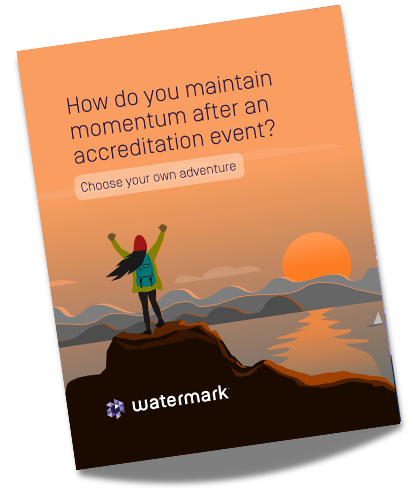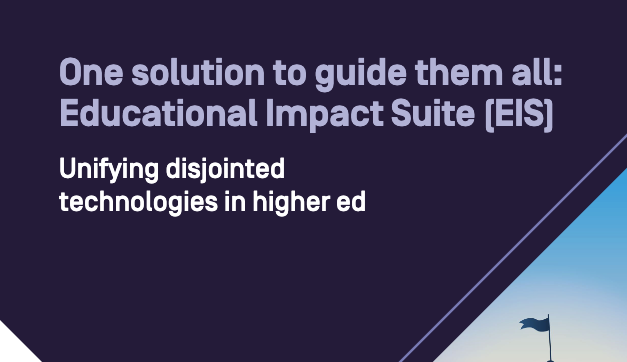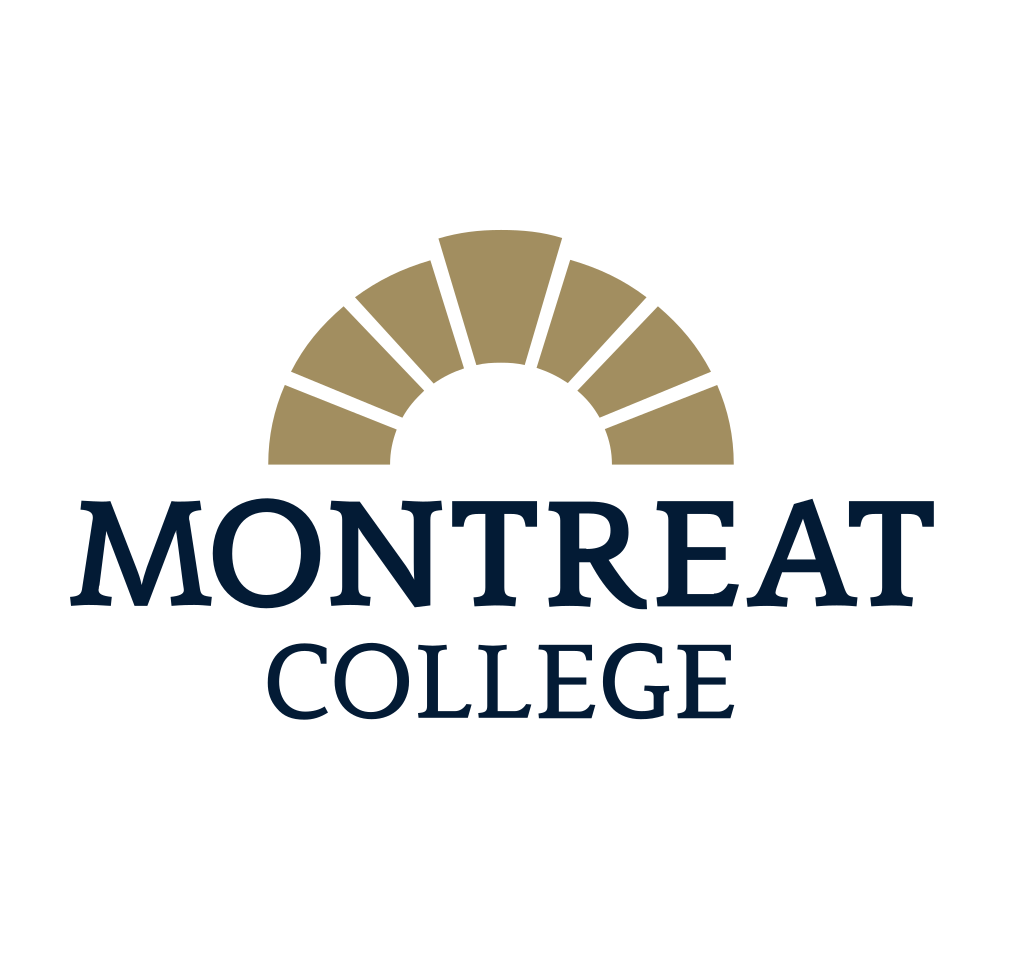How do you maintain momentum after an accreditation event?
Choose your own adventureContinuing to fuel the hard-earned momentum that follows an accreditation event can be a unique challenge for higher education institutions. But turning every success into an opportunity for lasting institutional improvement is a skill you can cultivate. In this eBook, you’ll hear from three of your peers about how to feed a continuous cycle of advancement. They’ll answer two questions:
- What are the top three ways your institution keeps momentum going after an accreditation event?
- What are your top three pieces of advice for institutions that want to keep momentum going after an accreditation event?
Learn more about how you can maintain momentum after an accreditation event.
Download Now

As a leader in higher education, your time is precious — and limited. We’ve structured this eBook so you can choose your own adventure depending on how much time you have right now.
If you only have a few moments and want some high-level takeaways as a quick refresher, refer to the sections that offer a bird’s-eye view of answers for these questions. If you’re settling in with a cup of coffee and ready for some deeper reflection, head to the sections that bring you along on more of a deep dive — and maybe take some notes!
Of course, we recommend that you read both. And why not keep this somewhere easily accessible so you can consult it before and after your next accreditation event?
Bird’s-eye view
- Establish recognition opportunities to showcase exceptional efforts and develop increased engagement in continuous improvement (assessment celebration with awards, assessment leadership institute with stipend, student engagement grants).
- Have a dedicated team providing outreach and support to faculty, staff, and leadership on related processes.
- Incentivize professional development via mini grants to focus efforts on and encourage equity-minded assessment.
—Jerry Edmonds, Ph.D., Senior Assistant Provost for Academic Affairs and adjunct professor at Syracuse University
- We used the opportunity to make the move to Watermark Planning & Self-Study, as there is much more versatility than there was in Taskstream.
- Used our Assessment Matters newsletter to encourage everyone to keep going!
- Being a co-chair of one of the criteria of the self-study definitely helped me understand more of the big picture of what else is happening in the university with assessment. It has helped my team and me generate ideas and have some collaboration with other units.
—Elaine Marchello, Ph.D., Assistant Director of Assessment at the University of Arizona
Deep dive
Contributed by TaLisha Givan, Ed.D., Chief Learning Officer and Vice Chancellor for Academic Affairs at Henderson State University
Debrief and reflect.
Take the time to conduct a thorough debriefing session following the accreditation visit. At Henderson State, we schedule time during our yearly fall faculty and staff conference to discuss the site visit report and outcomes. It is imperative that we openly discuss what went well and where we faced challenges.
Debriefing affords us the opportunity to acknowledge individual contributions and foster campus positivity. During this time, we also reflect on our mission, strategic plan, and vision moving forward. The goal is to streamline our processes, enhance communication, and continually strengthen teamwork.
“As times change, students change, and best practices change, our campus community must adjust to accommodate those changes.”
—TaLisha Givan, Ed.D
Immediately set new goals.
Accreditation occurs in a cycle. Mission and vision, goals, implementation, assess, evaluate, reflect…rinse and repeat. Because the cycle of accreditation is continuous, it is important to immediately set new goals.
Our faculty and staff are reminded that celebrating our success is a must; however, those successes now serve as the baseline for new goals (i.e., we achieved 10 points; our next goal is 15). Establishing new goals reminds us that we are in the business of continuous improvement, as goals provide a clear roadmap, cultivate a sense of purpose, redefine objectives necessary for goal attainment, and offer a measurable framework for success.
As times change, students change, and best practices change, our campus community must adjust to accommodate those changes. And the best way to do this successfully is to immediately set new goals.
Schedule periodic updates.
One of the greatest factors about the accreditation cycle is its predictability. As soon as we finish an accreditation cycle, we already have the next cycle established.
Scheduling periodic campus updates and check-ins (quarterly or semesterly) concerning our accreditation cycle keeps it at the forefront of our thoughts and proves crucial to ensuring that the campus community remains vigilant in our pursuit of progress. These updates may begin via email and lead up to campus town halls and listening, reviewing, and editing sessions as we see necessary.
“The process has to become a part of the pathway towards progress.”
—TaLisha Givan, Ed.D
For those elements that have been identified as a challenge, the periodic updates may include a more targeted approach for communication and collaboration. In whatever version we choose to employ, the process has to become a part of the pathway towards progress.
—TaLisha Givan, Ed.D., Chief Learning Officer and Vice Chancellor for Academic Affairs at Henderson State University
Your institution’s journey doesn’t end after an accreditation event; it enters a new phase. To be a modern institution is to be engaged in a perpetual cycle of progress. By embracing the strategies outlined, institutions can fortify their standing and foster enduring excellence in higher education. They can navigate their way forward — sometimes quickly, sometimes slowly, but always with an aim for excellence.
Gain momentum with Watermark
At Watermark, we understand that information is a catalyst for transformation. For more than two decades, we’ve developed inventive solutions tailored to the unique needs of colleges and universities to help them harness meaningful data and make improvements on their campus. If you’re interested in learning more about how Watermark can enable your institution to establish a robust framework for assessment and accreditation processes, request a demo today.

Browse our resource library
See how our tools are helping clients right now, get in-depth information on topics that matter, and stay up-to-date on trends in higher ed.








